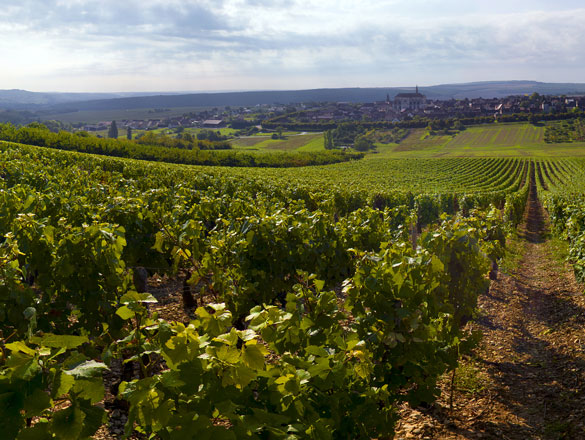

The vineyards of Bourgogne produce some great wines with a historical and international reputation. However, the region is not simply limited to its iconic appellations. In addition to its Village Premier Cru and Grand Cru AOCs, it also produces a range of wonderful Régionale and Village appellations to explore.
You will also find a full list of the Bourgogne’s Climats and lieux-dits on this page.
Check out the complete list of the 84 Bourgogne appellations.
However, your exploration has only just begun. Bourgogne wines have never before offered such high quality. Besides our range of internationally celebrated wines, try some of our lesser-known appellations where there are lots of surprises in store.
And for a fun way to find out more about the wines on offer, try out our “Which Bourgogne wine is right for me?” quiz, or check out Bourgogne Maps to take an interactive tour of the region.
Regional appellation ; Dénomination Géographique Complémentaire
VIGNOBLES DE CHABLIS ET DU GRAND AUXERROIS
31 juillet 1937
Reds and rosés - Pinot Noir.
Whites - Chardonnay.
Area under production*:
1 hectare (ha) = 10,000 m² = 24 ouvrées.
Reds and rosés: 116.47 ha
Whites: 20.65 ha
Average annual yield**:
1 hectolitre (hl) = 100 litres = 133 bottles.
Reds and rosés: 4,234 hl
Whites: 748 hl
*In 2022 **5-year average, 2017-2021
The Bourgogne Coulanges-La-Vineuse Régionale appellation covers still red, white, and rosé wines produced in an area covering seven villages that was defined in 1990.

The reds range from cherry red to purple in color, with hints of ruby. The nose offers notes of cherry, blackcurrant, and toast, with scents of violet and rose. In the mouth, it is forthright with crisp tannins and lengthy saline finish over aromas of blackcurrant, raspberry, and wild strawberry, sometimes accompanied by touches of licorice and pepper.
The whites range from pale yellow to pale yellow gold, with hints of silvery yellow. The nose reveals touches of honeysuckle with saline notes along with pear, quince, peach, honey, and brioche. In the mouth, it is fleshy and full of sunshine, with aromas of tropical fruit followed by a fresh and indulgent finish.
The rosés offer a palette of color ranging from rosewood to raspberry to coral. The nose is dominated by aromas of red berries with an indulgent mineral freshness on the tongue.

Red: Their tannic sophistication and fleshy fruitiness call for light accompaniments. They make a fine aperitif, served with savory tapas and sophisticated cold cuts, marinated vegetables and grilled fish. Try them with meat-topped pizzas, different versions of pasta with tomato sauce, sautéed vegetables, poultry grilled with herbs, or roast fillet of beef with vegetables.
Cuvées from the best Climats that have enjoyed long ageing make a good match for duck breast with black cherries, shoulder of lamb with a parmesan crust, or boeuf bourguignon. With cheese, try the fruity caress of a soft Brie, Chaource, or Reblochon, or perhaps with Salers or Saint-Nectaire.
Serving temperature: 14-16°C.
White: Their roundedness and aromatic smoothness make them ideal served as an aperitif with a range of savory tapas, cheese gougères, grilled andouillette, grilled shellfish, roasted fish, supremes of turkey in a cream sauce, veal blanquette, roasted bream, or mushroom risotto. In terms of cheese, pair it with ash-coated goat cheese, Comté, Beaufort, and mountain Tomme.
Serving temperature: 11-12°C.
Rosé: These indulgent wines will delight the palate when served with traditional Bourgogne snacks such as gougères, jambon persillé, or feuilletés d’andouillette…
Serving temperature: 8-10°C.

The vines of Bourgogne Coulanges-La-Vineuse are located in the northern part of Bourgogne, a few kilometers south of Auxerre on the left bank on the river Yonne. As their name so delightfully suggests, we are in historical wine country here, and plenty of written testimony attests to the fact that wines produced here ended up on the tables of Charles V, Charles VI, Louis XI, Henri IV, and Louis XIV. In 1776, Coulanges-la-Vineuse was home to 243 winegrowers and no fewer than 17 coopers. At the Roman site of Escolives-Sainte-Camille, there is a relief from the 2nd century called “Le Petit Amour Vendangeur” bearing witness to the presence of vines at that time. This is a history that lasts.

The vines grow at between 155-310m above sea level, on south- and southeastfacing slopes in this landscape of small valleys created through erosion, which enjoys a favorable microclimate. The soil is made up of limestone, clay, and marl formations from the Kimmeridgian.
